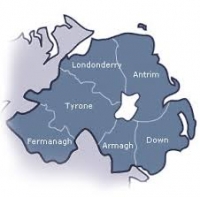
Labour Market Statistics Published
The labour market statistics were published today by the Northern Ireland Statistics and Research Agency.
Key points
Labour Force Survey (LFS) unemployment increased over the quarter and decreased over the year
The latest NI seasonally adjusted unemployment rate for the period April-June 2018 was 3.8%. The unemployment rate increased by 0.6 pps over the quarter from a record low and decreased by 1.5 pps over the year (from 5.3%). The annual rate change was statistically significant, i.e. the recorded changes exceeded the variability expected from a sample survey of this size and would, therefore, likely reflect a real change.
The NI unemployment rate (3.8%) was below the UK average of 4.0% and was the fourth lowest rate of the UK regions (higher than the South West, South East and East). NI unemployment was lower than the European Union (7.0%) and the Republic of Ireland (5.3%) rates for May 2018.
Figures for April-June 2018 estimated that 63.1% of those unemployed in NI were long-term unemployed (i.e. unemployed for one year or more), compared to 26.7% in the UK.
The youth unemployment rate (those aged 18 to 24 years) for April-June 2018 was 9.4%, down 3.2 pps over the year. The UK average rate was 9.8%.
LFS employment rate and inactivity rate both decreased over the quarter and increased over the year
There was a decrease (0.4 pps) in the employment rate (69.3%) over the quarter and an increase (0.1 pps) over the year. The change in the employment rate was not statistically significant over the quarter or the year.
The economic inactivity rate (27.9%) decreased over the quarter (0.1pps) and increased (1.0 pps) over the year. The changes over the quarter and year were not statistically significant.
NI Claimant Count (Experimental Series) decreased over the month
Universal Credit was introduced in NI in September 2017 replacing income-based Jobseekers Allowance for new claimants. On the July claimant count reference date Universal Credit was available in 21 out of 35 Job Centres in NI.
In July 2018, the seasonally adjusted number of people on the claimant count (which includes some out-of-work claimants of Universal Credit) was 28,100 (3.1% of the workforce). This represents a decrease of 400 from the previous month’s revised figure.

Confirmed redundancies increased over the year
The number of confirmed redundancies (2,907) in the most recent 12 months is 30% higher than in the previous 12 months. NISRA, acting on behalf of the Department for the Economy, received confirmation that 133 redundancies took place in July 2018.
Commentary
- The most recent results mark the fourth consecutive quarter of historically low unemployment rates in Northern Ireland. At 3.8% the April-June unemployment rate is above the record low reported for the previous quarter and significantly below rates one year ago. While the unemployment rate is low, the number of long term unemployed remains high (at over three fifths of the unemployed).
- The employment and inactivity rates both decreased over the quarter and increased over the year. At 69.3% the employment rate is significantly above rates estimated in 2013 but remains below the UK (75.6%) and the lowest of the UK regions. The economic inactivity rate (27.9%) is similar to rates 5 years ago and continues to be the highest of the UK regions.
- The improvements seen in the local labour market over recent quarters are similar to that of the UK labour market which is reporting one of the highest employment rates and the lowest unemployment rate on record. In contrast to the NI experience, the UK results show low levels of economic inactivity.
ABC Comment: have your say below:

Leave a comment
Make sure you enter all the required information, indicated by an asterisk (*). HTML code is not allowed.
Join
FREE
Here










